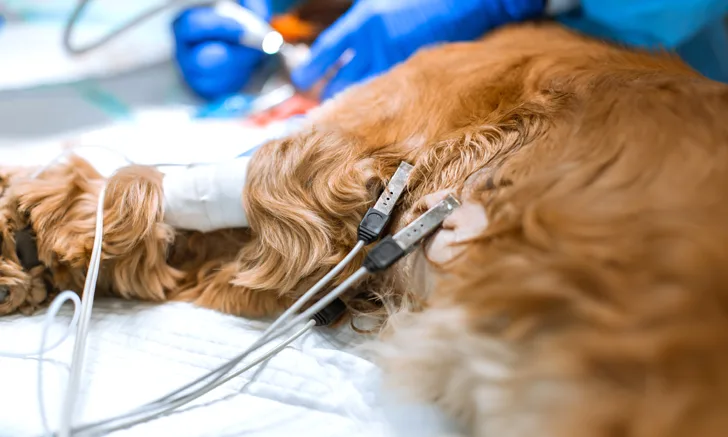
In the Literature
Tisotti T, Valverde A, Hopkins A, O'Sullivan ML, Hanna B, Arroyo L. Use of intravenous lidocaine to treat dexmedetomidine-induced bradycardia in sedated and anesthetized dogs. Vet Anaesth Analg. 2021;48(2):174-186.
The Research …
Dexmedetomidine is commonly used as a sedative or premedication for isoflurane anesthesia in dogs. Vagally mediated, dose-dependent, hemodynamic adverse effects (eg, bradycardia, atrioventricular [AV] block) are often profound. Lidocaine IV has been shown to increase heart rate in dogs when vagal tone is high.1
This randomized crossover study was designed to evaluate the effects of lidocaine 2% as both an IV bolus and a CRI on heart rate and AV block after IV administration of dexmedetomidine. Six healthy, 18-month-old beagles were randomly assigned to one of 3 treatment groups; 2 groups included conscious (ie, SED1, SED2) dogs, and the third group was anesthetized with isoflurane (ie, ISO). Dexmedetomidine (10 µg/kg IV) was administered to all groups.
Treatment in the SED1 and ISO groups included a lidocaine 2% bolus (2 mg/kg IV) 30 minutes after dexmedetomidine administration, followed 20 minutes later by a second bolus and a 30-minute lidocaine 2% CRI (50 µg/kg/minute in the SED1 group and 100 µg/kg/minute in the ISO group).
Treatment in the SED2 group included a lidocaine 2% bolus and a 50 µg/kg/minute lidocaine 2% CRI given 5 minutes after dexmedetomidine administration.
All dogs in the SED1 and SED2 groups became bradycardic, and AV block was seen in 5 out of 6 dogs from each group 5 minutes after dexmedetomidine administration. One dog in the ISO group experienced AV block 5 minutes after dexmedetomidine administration. Lidocaine 2% increased heart rate significantly in all dogs; AV block persisted after 30 minutes in one dog in each of the SED1 and SED2 groups. Values for all cardiopulmonary variables improved after administration of lidocaine 2%.
Systemic vascular resistance index and mean arterial blood pressure were elevated after administration of dexmedetomidine. Lidocaine 2% decreased both parameters to clinically suitable levels. The authors noted that this response was unexpected, and the cause is unknown.
Based on these results, lidocaine 2% to increase heart rate in dogs with bradycardia due to dexmedetomidine IV may be more desirable than an anticholinergic or reversal with atipamezole. Sedative and analgesic effects of dexmedetomidine are not affected by lidocaine 2%.
This was a small study in healthy dogs; results may not apply to those with underlying disease.
… The Takeaways
Key pearls to put into practice:
In healthy dogs, negative hemodynamic responses (ie, bradycardia, AV block, hypertension) after dexmedetomidine IV is administered for sedation or premedication for isoflurane anesthesia are significantly decreased by lidocaine 2% (2 mg/kg IV).
In dogs that receive dexmedetomidine IV, lidocaine 2% (2 mg/kg IV bolus and/or 50-100 µg/kg/minute CRI) may improve hemodynamics more effectively than an anticholinergic or reversal with atipamezole.2-4
The sedative and analgesic effects of dexmedetomidine are maintained in dogs when lidocaine 2% is used to improve cardiovascular variables.
You are reading 2-Minute Takeaways, a research summary resource presented by Clinician’s Brief. Clinician’s Brief does not conduct primary research.